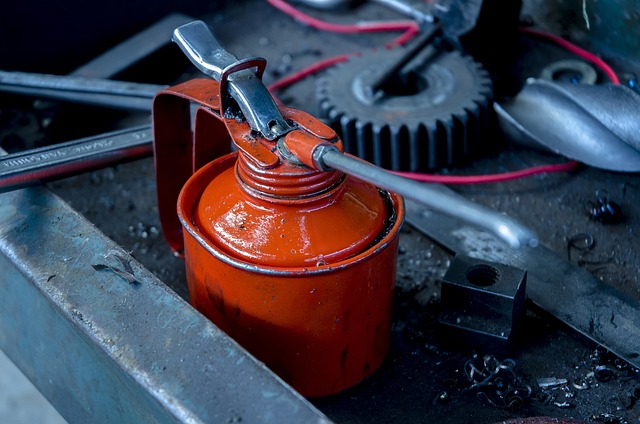Summer Maintenance Tips for Your Industrial Chiller 2025
Seasonal maintenance of chillers can help equipment operate stably in high-temperature environments. This article introduces summer process chiller maintenance tips for summer-specific factors such as high temperature, humidity, high load, and power grid fluctuations.
Troubleshoot hot air recirculation
When the air-cooled chiller is installed in a poorly ventilated area in summer, the hot air discharged from the condenser is difficult to dissipate in time. After a long period of accumulation, it may be re-inhaled into the condenser by the fan, causing a hot air recirculation. This will cause the condensing pressure to continue to rise and the equipment to frequently alarm and shut down.
General regular maintenance will not check the on-site wind flow lines, so it is recommended to ask professionals to conduct an on-site airflow pattern inspection or environmental assessment before summer. Confirm that there is no obstruction in the air outlet direction of the condenser, and use an infrared thermometer to measure whether the air temperature at the condenser inlet is too high (>5°C above the ambient temperature).
If the ventilation in the space is poor, you can add an air outlet guide duct or install a hood to guide the hot air to an area away from the air inlet side. Installing exhaust equipment on the top or wall of the hot zone can also accelerate the dissipation of hot air.
Sterilization
In summer, the ambient temperature is high and the humidity is high, and microorganisms such as bacteria, algae, and mold are easy to breed. Scale, slime, and microbial film will accumulate inside the water tank or cooling tower of the water-cooled chiller, which will corrode the pipes, cause the cooling water to deteriorate, and even endanger human health. Industrial-grade water treatment agents such as PAAS (polyamino acid) corrosion inhibitors and H2O2+Ag+ composite fungicides should be used regularly for sterilization.
They have the characteristics of broad-spectrum sterilization, low corrosion, and no residue, and are suitable for cleaning precision equipment cooling systems. Bleaching powder or chlorine-containing fungicides must not be used, which are easy to corrode metal heat exchangers.
Add a disinfectant after shutdown, let the circulating pump run for 30-60 minutes, ensure that the disinfectant covers all water channels, and empty it after standing for 1-2 hours, and clean the water tank and filter. You can also flush the metal pipes with hot soft water and pure water within the system’s allowable temperature to help remove biofilm. Cooling towers are prone to Legionella growth, so the tower should be cleaned and treated with algaecides, or an automatic doser should be installed to automatically dispense fungicides.

Start the compressor at off-peak times
The power load increases sharply in summer, especially from 12 noon to 4 pm, the voltage fluctuates greatly, and the current increases sharply when multiple compressors are started at the same time, and the equipment is prone to tripping. Avoid starting the chiller compressors during the peak period of the city power load or the high temperature period to reduce the impact of the instantaneous starting current on the power grid.
Shorten the lubricant replacement cycle
In summer, the compressor is allowed to operate under high load for a long time, and the lubricant aging rate is accelerated. Lubricant aging will aggravate bearing friction, leading to increased temperature and shortened equipment life. Oil sludge cause blockage of lubricant channels and return oil pipes. Samples should be taken to check the viscosity, acid value and water content of the oil, monitor the oil pressure and return oil volume, and shorten the replacement cycle by 25%~30%, subject to the test results.

The start time of the chiller can be advanced to the morning (such as before 7 o’clock), and the residual cooling capacity at night can be used to reduce the load at noon. Start the cooling water pump 10 minutes before the compressor starts to ensure that the condenser has cooling capacity to avoid poor initial cooling.
For important production lines or high-precision processes, it is recommended to perform pre-cooling operation in the early morning or at night to reduce the workload of the compressor during the day. If the equipment has multiple compressors or parallel modules, a 1-3 minute delay start interval should be set to avoid simultaneous power-on. In addition, variable frequency start can reduce the start current shock, and adding a variable frequency drive is also a good choice.
Install a spray system
In a high temperature environment, the temperature difference between the condenser surface temperature and the air is reduced, and the cooling efficiency of the air-cooled chiller will decrease. Some workshops will assist in cooling by spraying water mist on the condenser. When the water mist evaporates, it absorbs a lot of heat and helps to reduce the surface temperature of the condenser. This method does not require the modification of the host structure, only the installation of a spray system.
The sprayed water is filtered water or softened water, otherwise it may cause fin blockage or corrosion, and avoid continuous spraying to cause water accumulation. The correct way is intermittent spraying, and the condensing temperature can be set to ≥60℃ or high pressure ≥1.7MPa to automatically start spraying. Electrical components need to be waterproof to prevent short circuits.
Conclusion
If you don’t know how to maintain the chiller in summer, our professional team can provide you with guidance. For customers who have purchased LNEYA chillers, we will also regularly provide maintenance recommendations and usage optimization solutions to help your equipment run stably.
Contact us to get exclusive summer maintenance recommendations or chiller quotes.
Related chillers
CONTACT US
TEL:
EMAIL:
WeChat & WhatsApp:

Wechat QR

Have a question or need a quote? Fill out the form below, and our team will get back to you within 24 hours.
 LNEYA Industrial Chillers Manufacturer Supplier
LNEYA Industrial Chillers Manufacturer Supplier
















